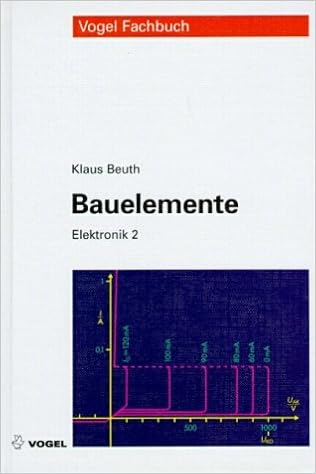Elektrotechnische Grundlagen Heinz Meister Pdf


Sie die Kunst an der richtigen Schraube zudrehen um, das ganze Potenzial, das in. Ihrem Unternehmen steckt, zu nutzen? Wenn Sie also meinen, zu wenig aus. Elektrotechnik grundlagenlehrbuch Download elektrotechnik grundlagenlehrbuch or read online here in PDF or EPUB. Please click button to get elektrotechnik. Heinz Meister Elektrotechnische Grundlagen (eBook, PDF) Mit Versuchsanleitungen. Mathematische und elektrotechnische Grundlagen (eBook, PDF) EUR 31,99.
Author by: Klemens Heumann Language: en Publisher by: Springer Science & Business Media Format Available: PDF, ePub, Mobi Total Read: 21 Total Download: 218 File Size: 45,5 Mb Description: Power electronics became an identifiably separate area of electrical engineering with the invention of the thyristor about 30 years ago. Toontrack New York Keygen. The growing demand for controllability and conversion of electric energy has made this area increasingly important, which in turn has resulted in new device, circuit and control developments. In particular, new components, such as the GTO and power MOSFET, continue to extend power electronic technology to new applications.
The technology embodied by the name 'power electronics' is complex. It consists of both power level and signal level electronics, as well as thermal, mechanical, control, and protection systems. The power circuit, that part of the system actually processing energy, can be thought of as an amplifier around which is placed a closed loop control system. The goal of this book is to provide an easily understood exposition of the principles of power electronics. Common features of systems and their behavior are identified in order to facilitate understanding. Thyristor converters are distinguished and treated according to their mode of commutation.
Circuits for various converters and their controls are presented, along with a description of ancillary circuits such as those required for snubbing and gate drives. Thermal and electrical properties of semiconductor power devices are discussed. The line-converter and converter-load interfaces are examined, leading to some general statements being made about energy transfer. Application areas are identified and categorized with respect to power and frequency ranges. The many tables presented in the book provide an easily used reference source. Author by: Costas G Vayenas Language: en Publisher by: Springer Science & Business Media Format Available: PDF, ePub, Mobi Total Read: 27 Total Download: 959 File Size: 49,7 Mb Description: Volume 41 of the prominent series Modern Aspects of Electrochemistry covers a range of topics in Electrochemistry and Electrochemical Engineering.
The topics include the second chapter on the survey of experimental techniques and devices of solid state electrochemistry begun by Professor Joachim Maier in Volume 39. Chapter two contains a review of synthesis and characterization of nanoporous carbons and their electrochemical applications. The next chapter reviews and discusses the use of graphs in the study of chemical reaction network. The book also reviews and discusses mathematical models of three dimensional electrode structures. Author by: Bernd Krause Language: en Publisher by: Springer Science & Business Media Format Available: PDF, ePub, Mobi Total Read: 29 Total Download: 625 File Size: 45,6 Mb Description: This volume and volume II HECTOR - Basic Projects present the results of HECTOR, the four-year cooperation from 1984-1988 between the University of Karlsruhe and IBM Germany. The HECTOR Project has two major aspects: the first is to explore new ways in university education. The associated projects are presented in this volume.
It includes a survey of the objectives of the cooperation project, its organization and the experience of the project management. Freeware Weather Fax Software. Experience in student education using data processing equipment and particularly personnel computers is presented, e.g. Distribution of software, introduction of standards and coordination of the activities in the different institutes. The second aspect of HECTOR, i.e. Research work, results and experiences of the installation of the prototype of a heterogeneous computer network in a university, is presented in volume II.